JAWS Timeline
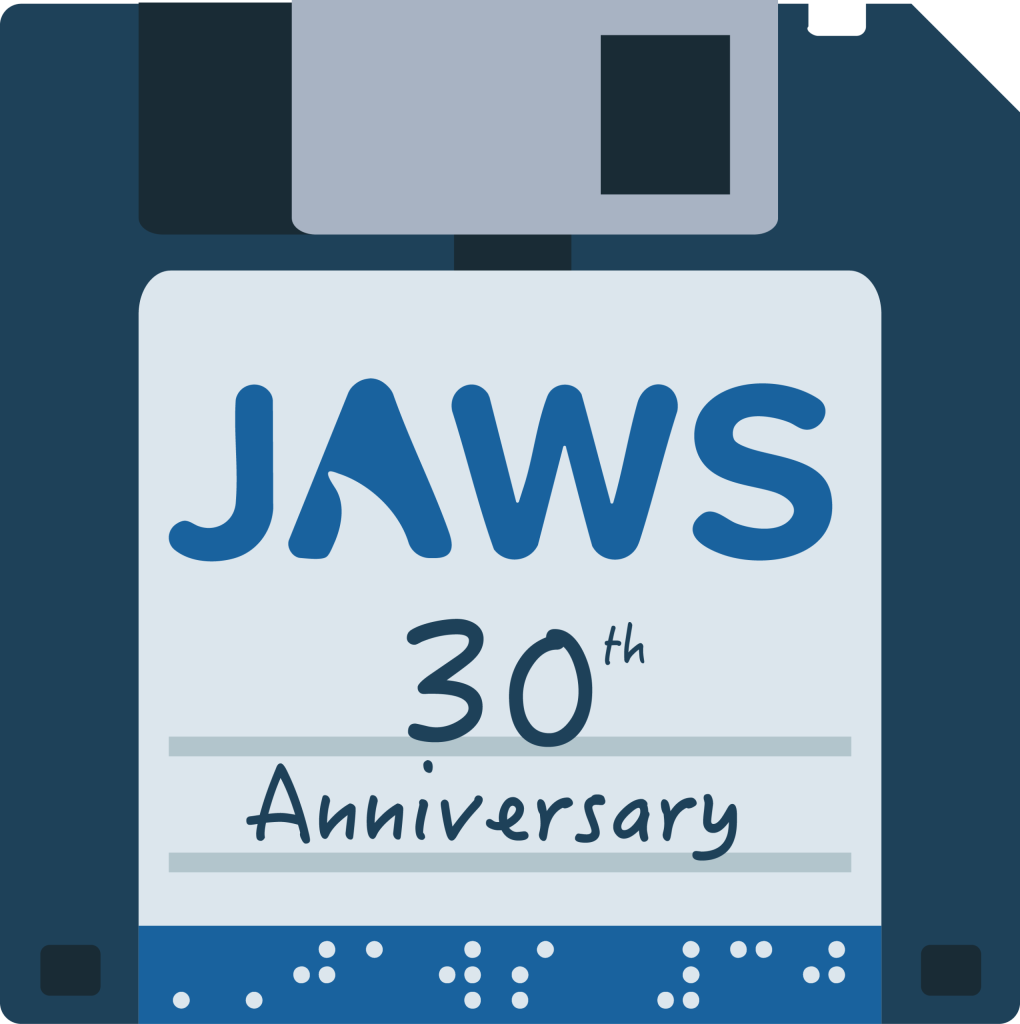
We're excited to celebrate the 30th anniversary of JAWS
Since its launch in 1995, JAWS has been more than just a screen reader—it has been a lifeline, breaking down barriers to education, employment, and everyday tasks. Whether it’s accessing websites, using productivity software, or connecting with loved ones, JAWS has helped millions of users unlock new opportunities and participate fully in an increasingly digital world. Through continuous innovation, dedicated community support, and a commitment to making technology accessible for all, JAWS has become the industry leader in screen reading technology, shaping the way people interact with computers and the internet. As we celebrate 30 years of progress, we look back at the impact JAWS has made and look forward to an even more inclusive future.
Explore JAWS through the years.

1995 – JAWS for Windows introduced
In January 1995, JAWS for Windows version 1 was released with support for Windows 3.1. Windows 95 support would follow a year later in version 2. It quickly became a preferred screen reader due to it’s emphasis to not interfere with the natural Windows user interface, a staple which has remained true to this day. It also kept the same navigation methods made popular in JAWS for DOS, allowing for an easy transition for users.
1996 – Scripting Support
JAWS scripts greatly expanded the ability to customize how JAWS worked with various applications. Using the JAWS scripting language, professionals and even regular users with basic programming skills could improve the accessibility and efficiency with applications that would otherwise be inaccessible or difficult to use.
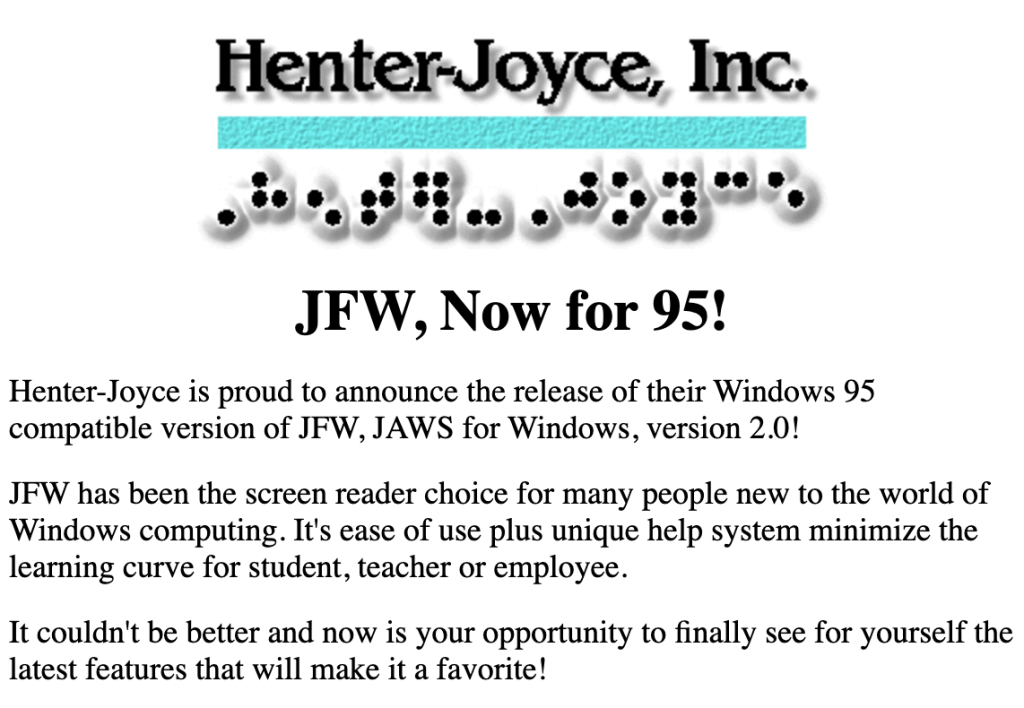
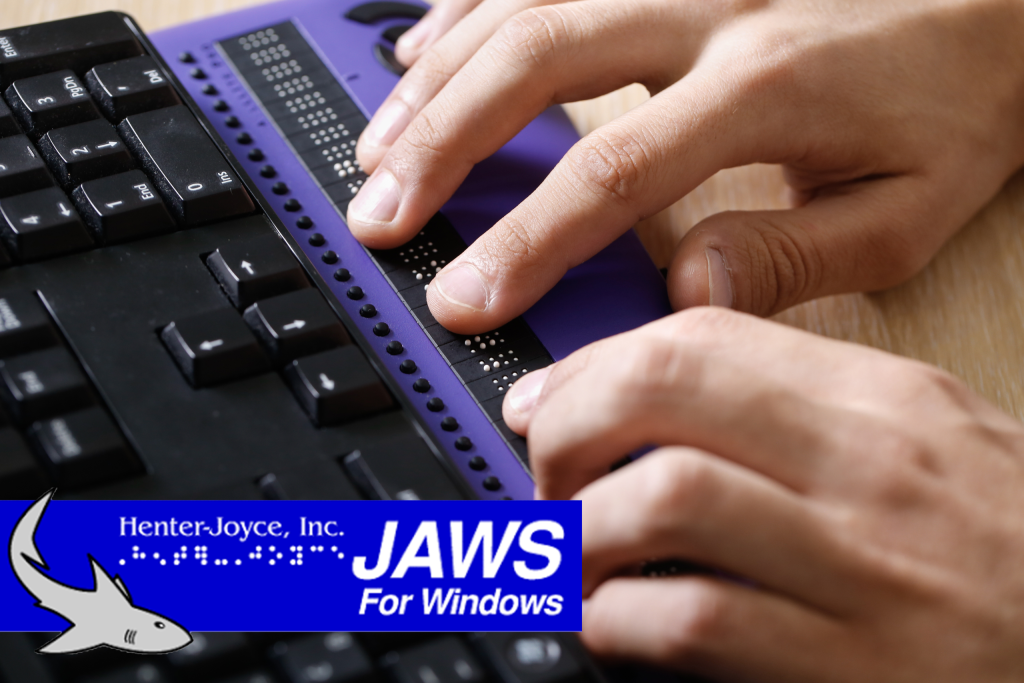
1997 – Braille Support
In JAWS was one of the first Windows screen readers to offer extensive support for a wide selection of refreshable Braille displays including the ability to perform screen reader commands using controls on the display. Adding robust Braille support also greatly helped JAWS gain more international use, especially in places like Europe.
1998 – First Built-in Software Synthesizer
With Eloquence, JAWS was the first screen reader to offer a synthesizer that talked through the computer’s sound card, reducing the need for a user to have to purchase a separate hardware synthesizer. Additionally, JAWS was now able to provide speech during the installation process, offering a true talking installer so a user could independently install JAWS without sighted assistance.
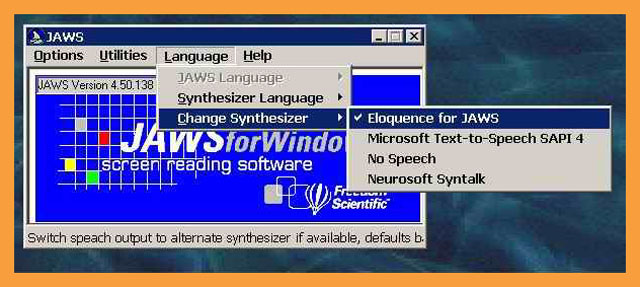
1999 – Virtual Buffer makes web navigation more efficient
The Virtual Cursor revolutionized internet navigation. Users could now use the ARROW keys and other standard Windows commands to interact with web pages just like in a word processing application.
2000 – Enhanced support for PowerPoint, Project, and other Office apps
JAWS has always offered unparalleled access to Microsoft Office applications. Through the power of JAWS scripting combine with information exposed to screen readers through technology like Microsoft Active Accessibility (MSAA), JAWS began offering innovative features such as the ability to set monitor cells in Excel to track content changes, detailed information on document structure in Word, access to presenter notes during a PowerPoint presentation, ability to configure settings that only load for specific documents, and much more.
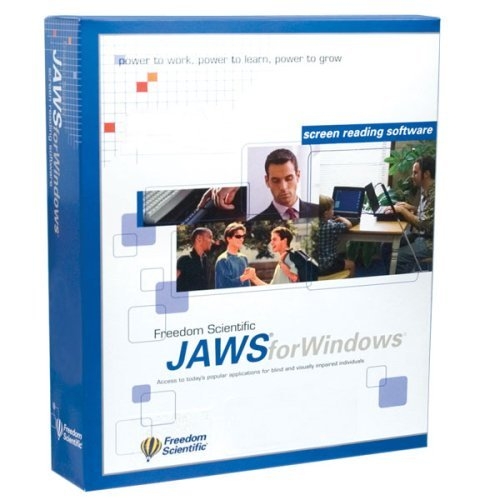
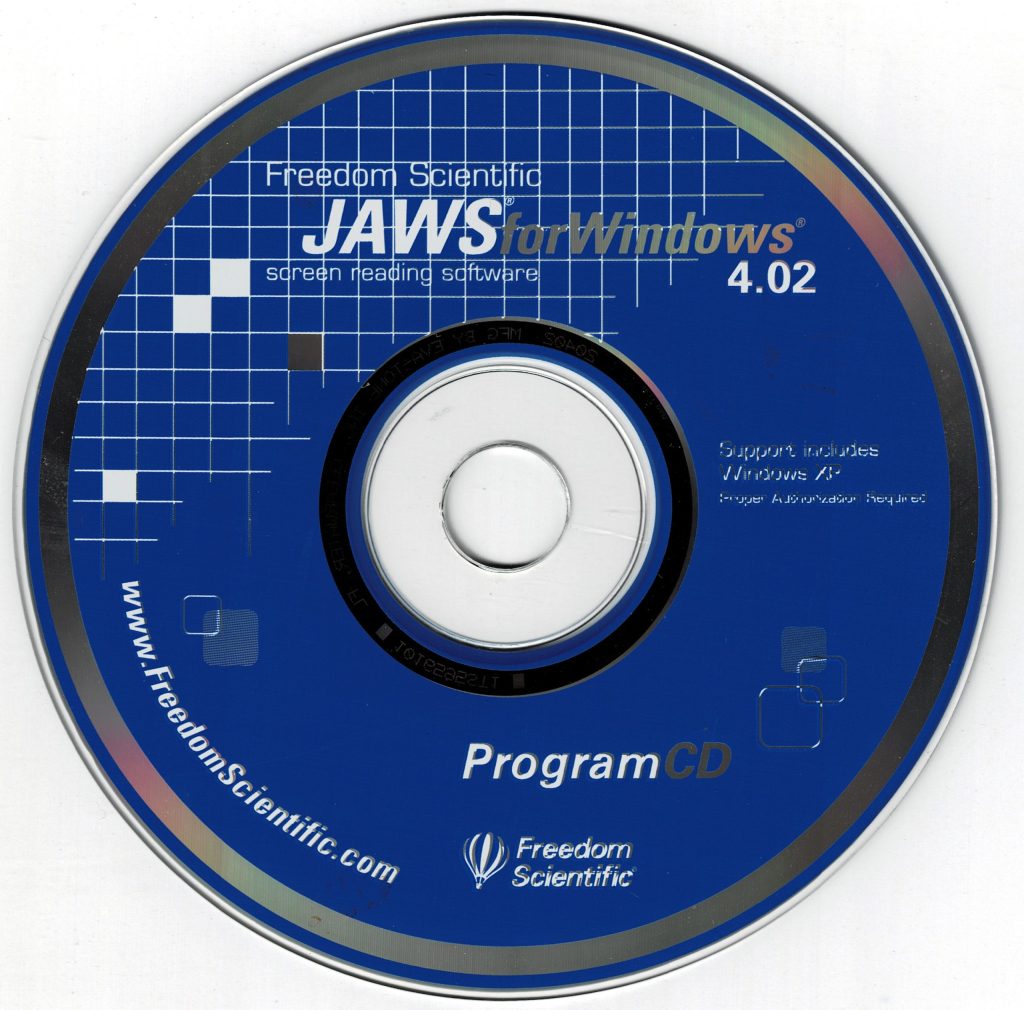
2001 – Support for Windows XP
Windows XP Home and Professional support was rolled out in a JAWS update soon after the operating system’s release. It was the first time users did not have a significant wait before they could begin using a screen reader with a major Windows upgrade.
2002 – Quick Navigation Keys
JAWS was the first screen reader to offer intuitiv, single letter command for quickly moving through elements on a web page like headings, tables, lists, and more. This greatly improved productivity as users could jump to a specific section and if they determined the content here was not what they needed, they could quickly move to another location without having to continuously use the ARROW keys to scroll through the page.
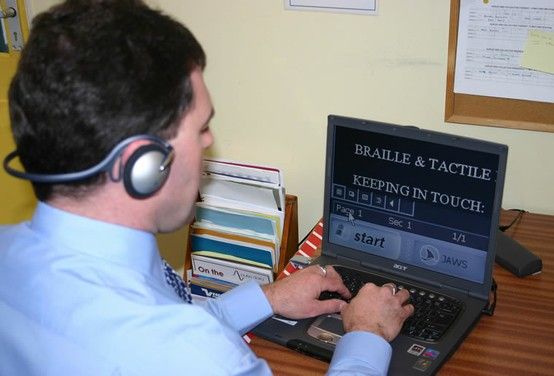
2003 – PlaceMarkers
This revolutionary feature further enhanced navigation of frequently visited web pages by allowing users to place a mark at one or more locations on a page and quickly return to it. Through an easy-to-use interface, you can add, name, navigate, and remove PlaceMarkers. This feature has continued to evolve to also be available in PDF documents, or anywhere the Virtual Cursor is active.
2004 – Speech and Sounds Manager
In prior releases, JAWS provided basic control over what was heard through speech, but this could still get too verbose. Speech and Sounds Manager was a major break through in Windows screen reading because it allowed all kinds of information to be user-definable. For example, you can: speak bolded text in a different voice, change the pitch as the font size changes, speak meaningful messages when encountering specific attributes, use a sound to indicate capitalization, use different sounds to indicate when focus moves to a specific element on a web page, and much more.
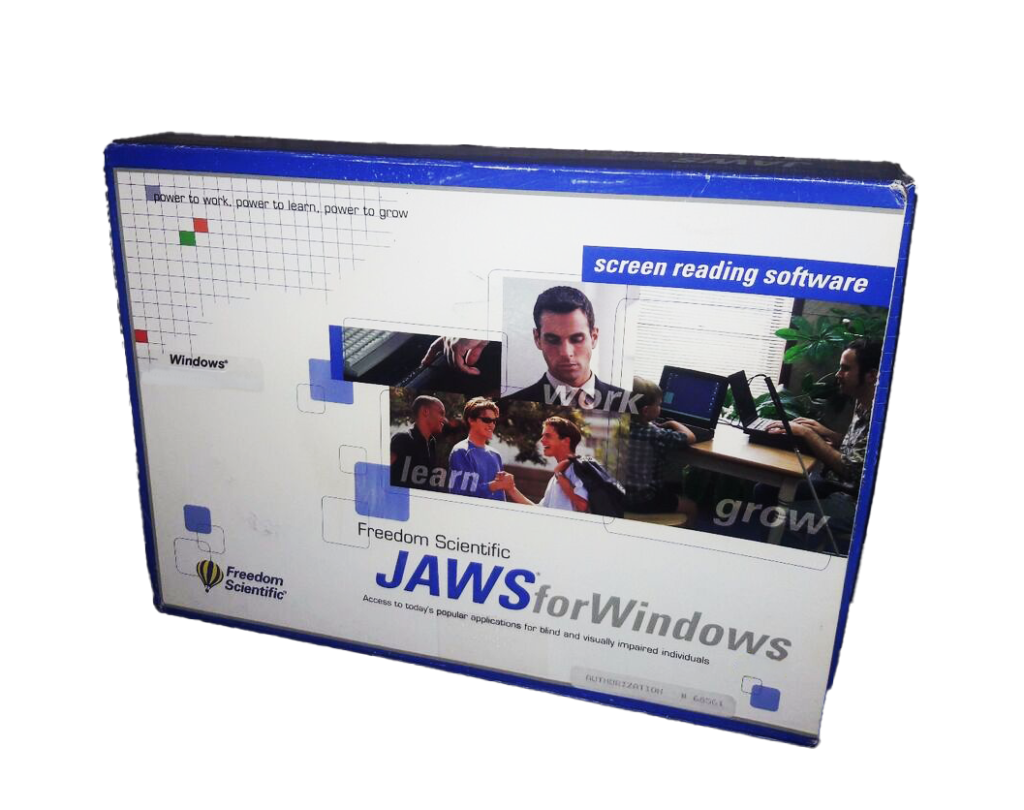
2005 – Automatic Updates
This service enabled Freedom Scientific to begin making changes and improvements to JAWS much more frequently instead of putting all major features in a single release. Users can quickly check for and download updates right from the Help menu without having to go out to the website.
2006 – Startup Wizard
This helpful tool runs directly after a JAWS installation and allows users to quickly configure common settings without the need to search through multiple dialogs and managers. Options include whether or not JAWS starts automatically, speech rate and verbosity, Forms Mode, and various Braille display options.
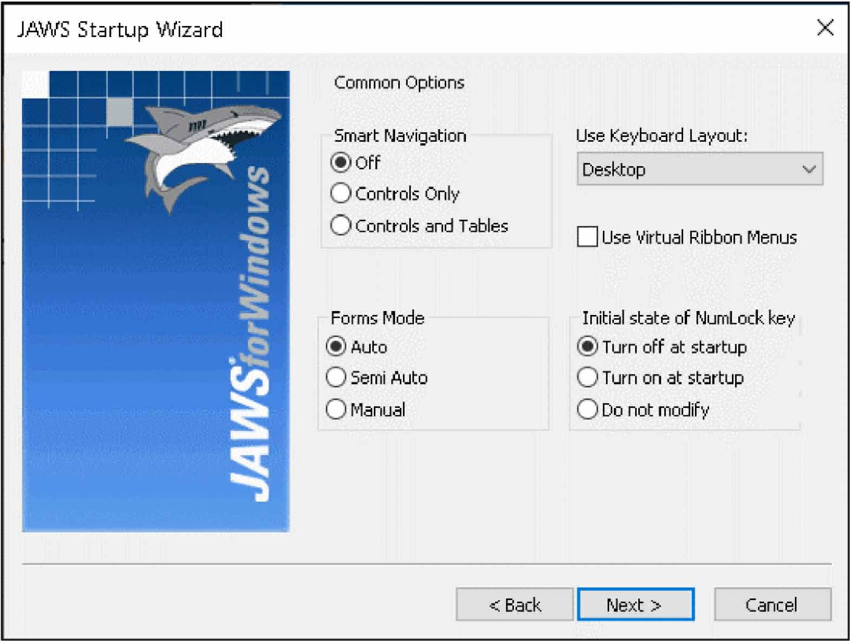

2007 – Braille Study Mode
A training tool that assists with teaching and learning Braille and works exclusively with Freedom Scientific Focus displays. When enabled, users can press Cursor Routers on the Focus and JAWS speaks the Braille character under the cursor and also announces and spells the current Braille word.
2008 – JAWS Tandem
This innovative feature enables any JAWS user to remotely access another JAWS computer in order to provide hands-on technical support, write and distribute scripts from a distance, and conduct remote JAWS training. Over the years, this service has been used by everyone from Freedom Scientific Technical Support to directly address customer issues, dealers and trainers providing assistance to their clients, script writers, and regular users helping out a friend or family member.

2009 – Research It
Created as a response to Windows Gadgets and Web Slices, Research It allowed JAWS users to quickly access information from a wide variety of sources, then return directly to their work in the same way one can glance at a widget and return to the current task. As widgets have become more accessible due to improvements with JAWS and Microsoft, Research It is less necessary.
2010 – Text Analyzer
When editing or proofreading a document, inconsistencies such as unmatched parentheses, unintentional format changes, extra whitespace, and stray or unspaced punctuation can often be missed, especially when using speech only. Text Analyzer is a tool that provides notifications of these errors in a document by speaking a message or playing a sound.
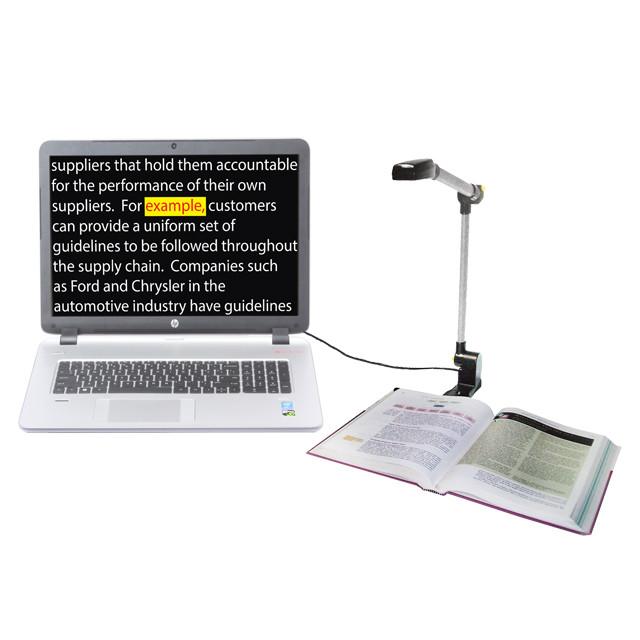
2011 – Convenient OCR
Frequently, users were encountering images containing textual information that JAWS was not able to read as it was part of the image. Convenient OCR (Optical Character Recognition) enables JAWS users to access any image on the screen that includes text. Over the years, this feature would expand to be able to recognize various image file types including inaccessible PDF documents.
2012 – Flexible Web
With websites increasingly interspersing excess content like advertisements throughout their pages which may disrupt the reading flow, users needed a solution to deal with the clutter. Flexible Web enables users to take more control of Web pages by allowing them to hide content that interrupts the reading experience as well as specifying where on the page JAWS begins reading.
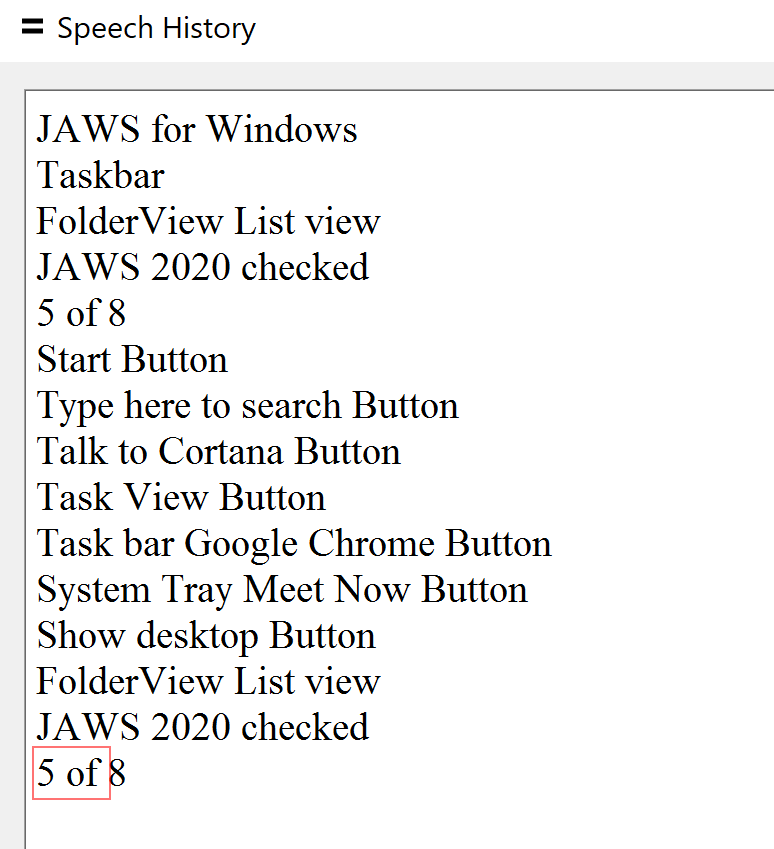
2013 – Speech History
For years, Braille users had a mode where the Braille display would show the exact information spoken by the speech synthesizer and they could also pan the display back to review recently spoken messages. Speech History extended this functionality to users who rely on speech more than Braille by allowing them to display recently spoken messages in a Results Viewer window. Initially, the last 50 messages were displayed, but this was increased in later updates to 500.
2014 – Math ML Support
With MathML support, JAWS enabled students to read and study math problems contained in web pages and Microsoft Word documents using both speech and Braille without the need to install any special plugins. JAWS provides spoken, natural-language descriptions of math expressions using the same terms a teacher would use to explain them in a classroom. This enables students using JAWS to read mathematical expressions as their sighted peers do.
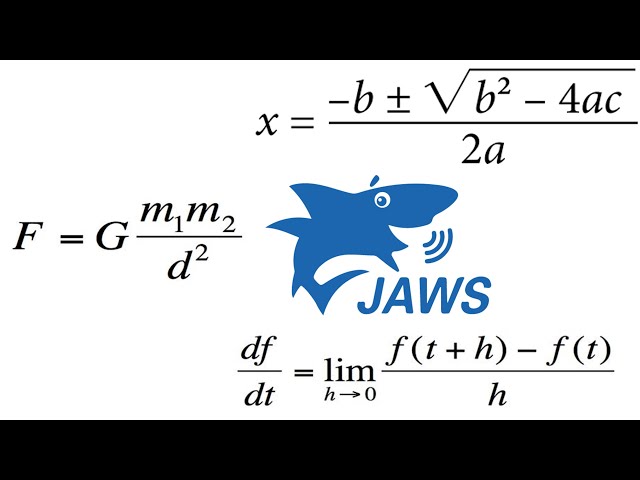
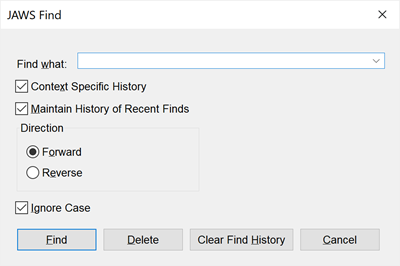
2015 – Command Search
JAWS offers a variety of keystrokes, many of which are not used on a regular basis. Command Search greatly simplified the process of locating a keystroke by allowing users to begin typing a command description and displaying keystrokes that match the search.
2016 – Custom Settings and Scripts for Specific Websites
This was the start of a framework that allowed Freedom Scientific as well as third-party scripters to create custom scripts and settings that would only load for specific websites. This made it possible to add keystrokes and other features for web applications like Google Docs and Sheets which offer unique functionality beyond what the general web browser scripts needed to perform.
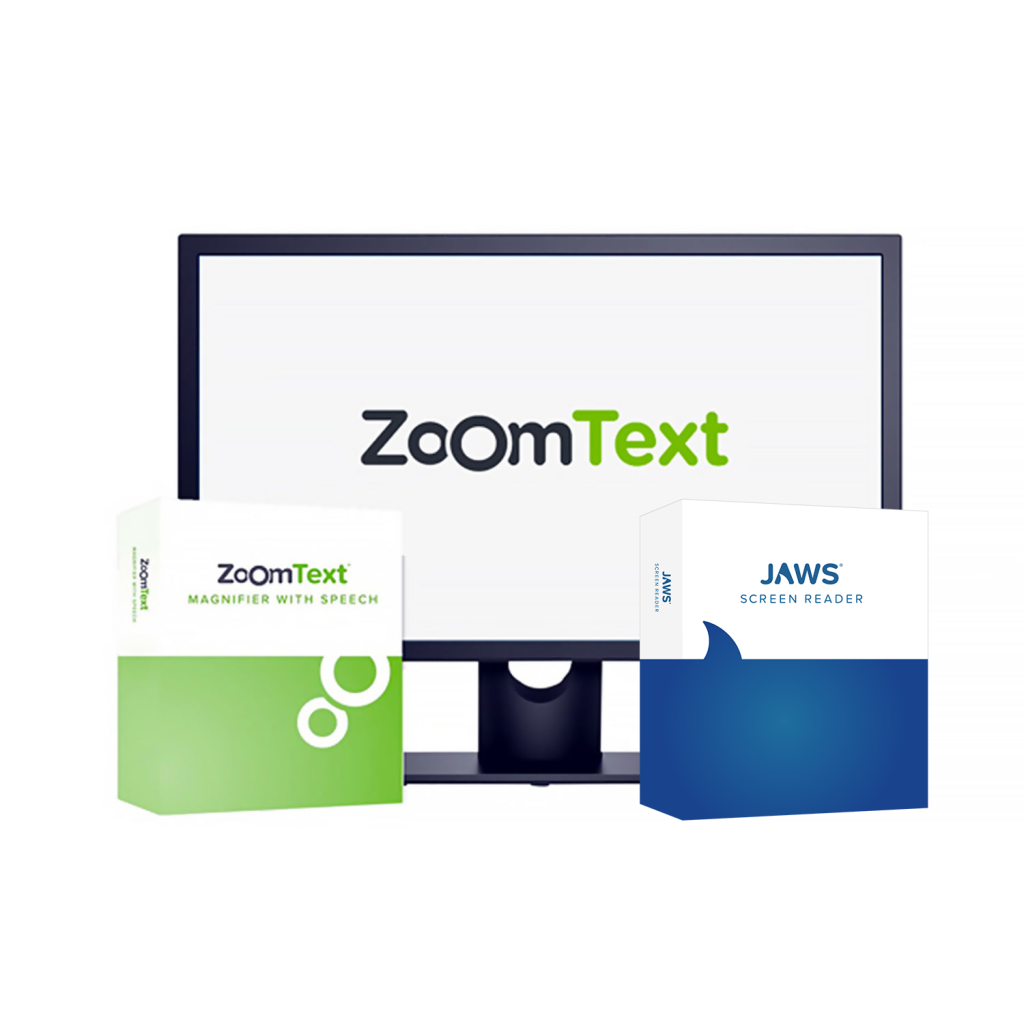
2017 – JAWS and ZoomText Compatibility
JAWS introduced greatly improved interoperability with the popular ZoomText magnification software. Users of both these industry leading products began experiencing more seamless operation when running JAWS and ZoomText together regardless of the order in which they were installed as well as which product was started first.
2018 – Speech on Demand
Allowed users to limit the amount of JAWS speech that is heard when navigating windows and documents or performing other actions using hot keys. Most helpful for Braille or magnification users who found too much speech overwhelming, but still wanted speech for certain reading tasks.
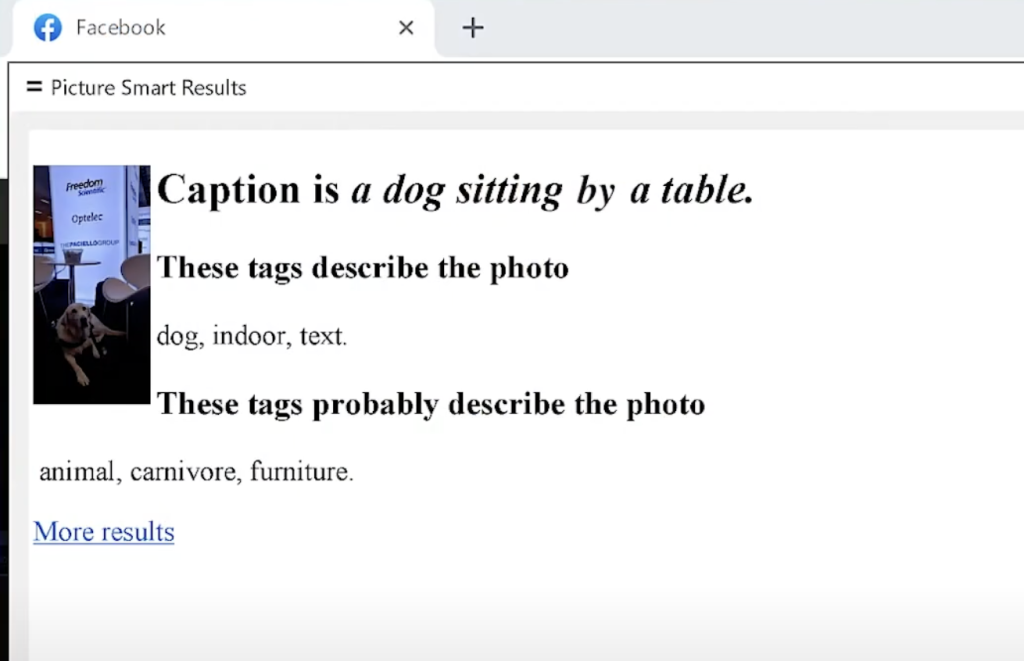
2019 – Original Picture Smart
For the first time, users could have JAWS submit any photo and receive a basic description of any visual details.
2020 – Multilingual Installation
When installing JAWS on computers offering multiple languages for Windows or specific applications like Office, there is an opportunity to install additional JAWS languages that may be needed. This makes it more convenient for agencies and other groups using multi-lingual systems as they can easily switch the JAWS user interface language to match the current operating system language without having to completely uninstall and install a different version of JAWS.
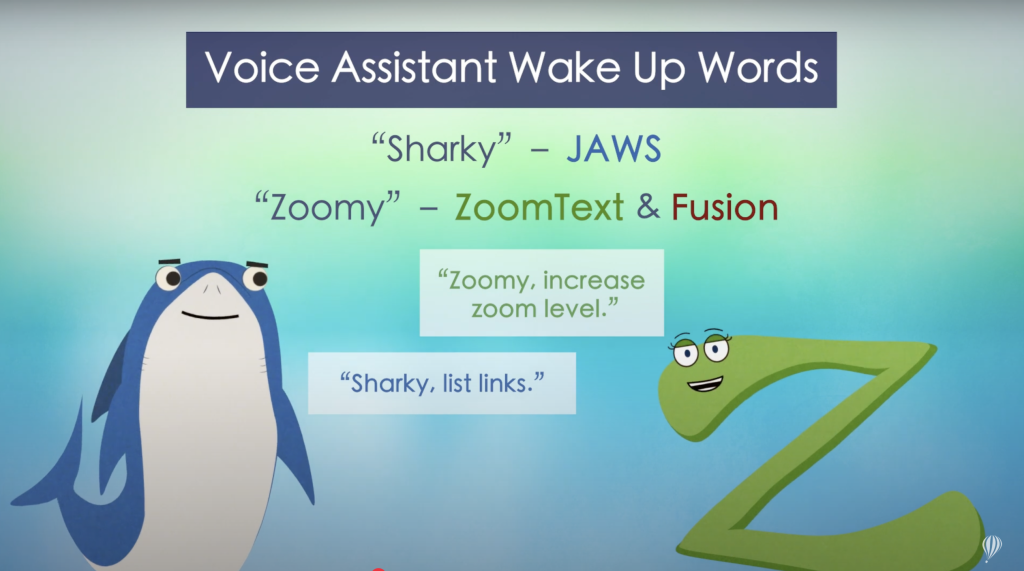
2021 – Voice Assistant
Known as Sharky, users with limited dexterity or who could not recall a specific keystroke could now interact with JAWS with just their voice. For example, “Sharky, what time is it” or Sharky, speak faster.”
2022 – Sound Splitter
When using stereo headsets or speakers, this popular feature routes all JAWS speech to one ear while routing audio from all other applications to the other ear. This helps make it easier to continue getting work done with JAWS while following along during a Zoom or Teams meeting, a Skype call, or a YouTube video.
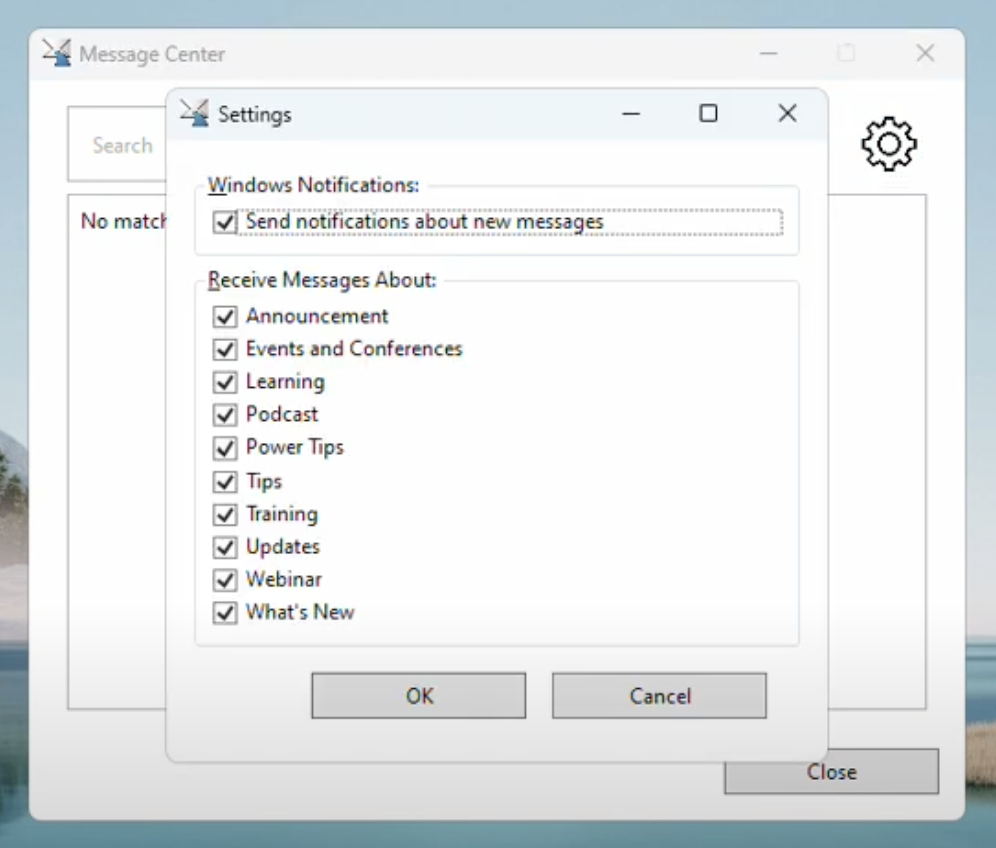
2023 – Message Center
A convenient hub for timely announcements from Freedom Scientific to help maximize your experience with JAWS. The messages cover various topics, including: product-specific training tips to explore key features, information about new features and changes in updates, details about upcoming webinars and additional training opportunities, and notifications about new FSCast podcast episodes.
2024 – Picture Smart AI
This revolutionary update to the original Picture Smart feature uses artificial intelligence (AI) to provide rich, detailed descriptions of visual content. By integrating with the latest AI technology from services like Chat GPT from Open AI and Claude from Anthropic, users now experience a whole new level of accessibility to graphical information.
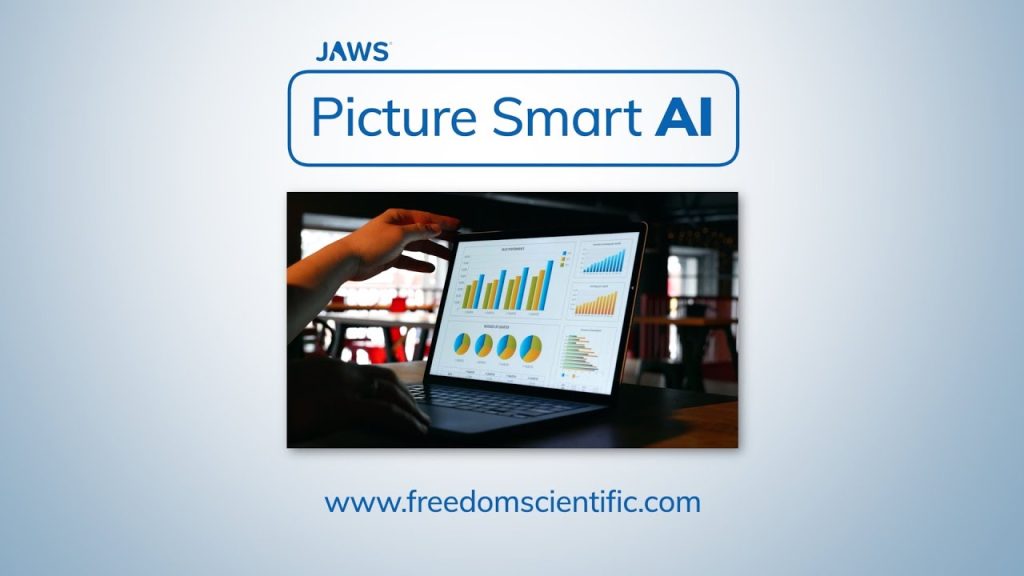
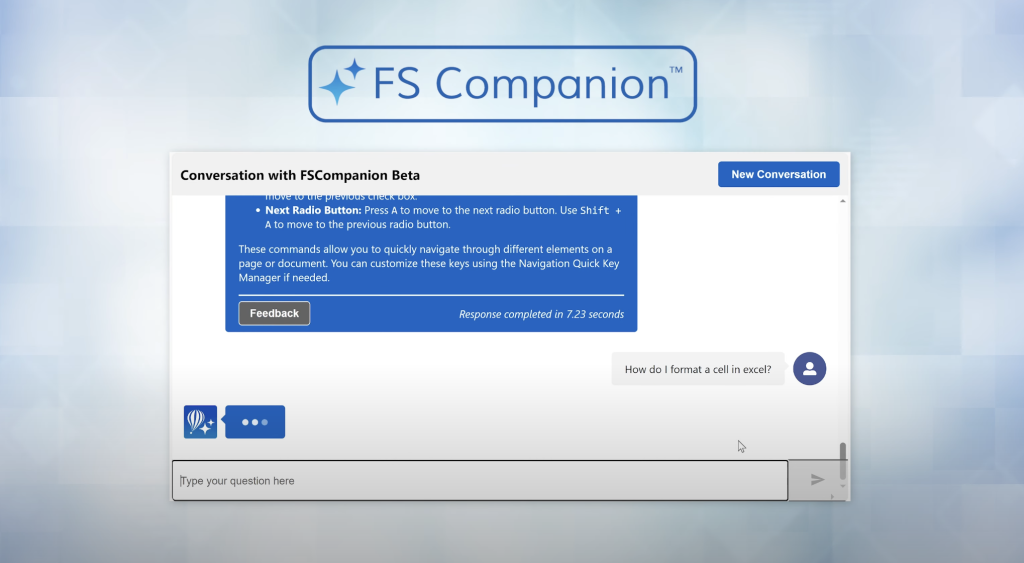
2025 – FS Companion
An AI-powered assistant for learning JAWS and Microsoft applications. With so many features and keystrokes available between JAWS, Windows, and the various Office apps, it can be challenging to locate instructions to perform a specific task or even look up a setting or keystroke. FSCompanion lets users ask questions about JAWS and other applications and quickly provides the necessary information without having to search through multiple documents and web pages to find it. The AI searches through various help and training resources in a matter of seconds, and provides the key details in a concise step-by-step format.
